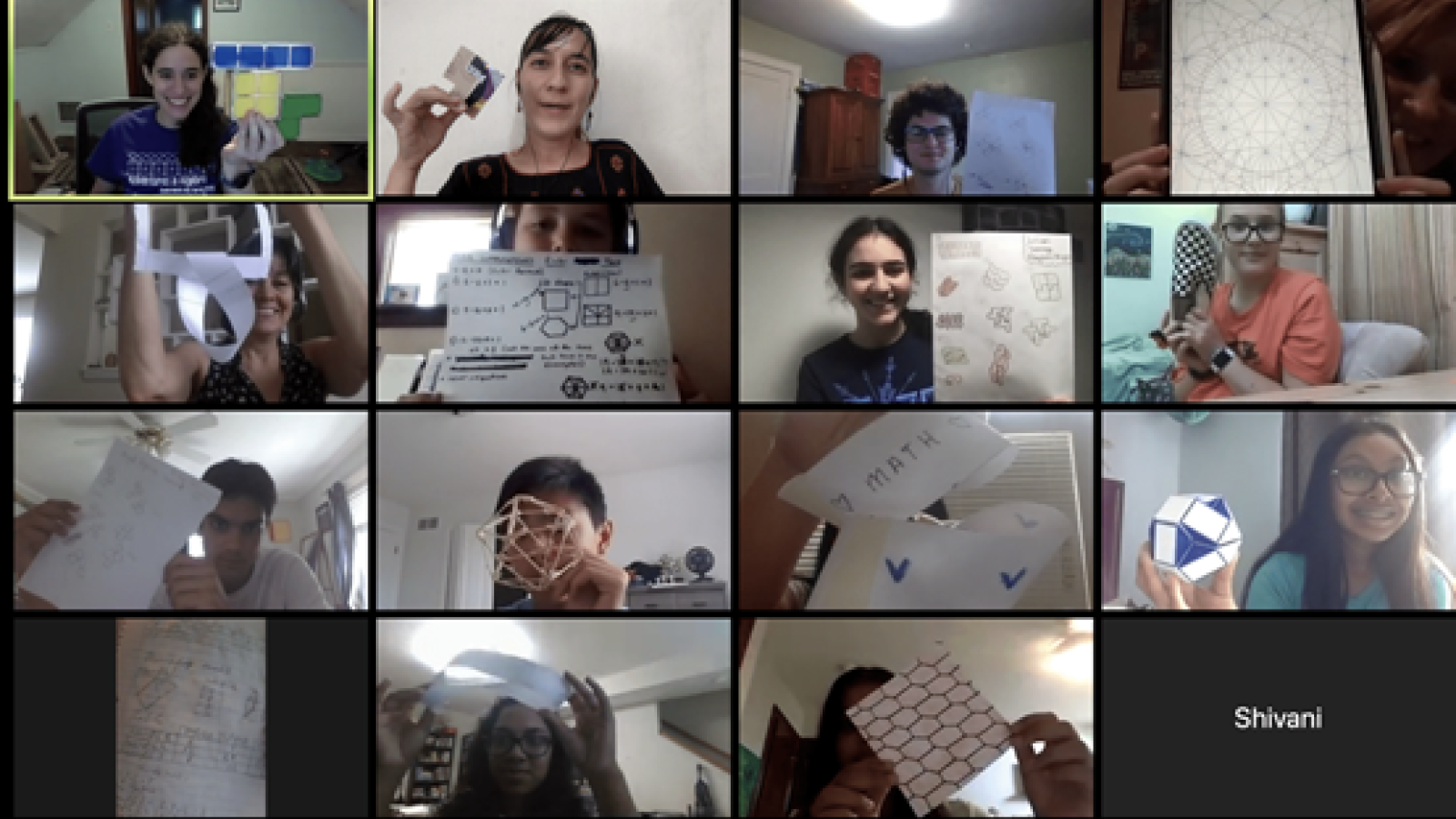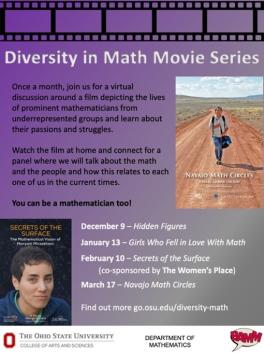
When COVID-19 forced schools to go virtual, the Department of Mathematics, through its outreach branch Buckeye Aha! Math Moments (BAMM), had to decide how to move forward with Beyond the Classroom, the annual math summer camp for high school students. The organizing committee had previously planned for this edition to include middle school students as well as openly be advertised as an all-gender camp (as opposed to focusing on girls as before). The pandemic, however, made the committee decide whether to cancel the event or host it virtually. While children would be looking forward to off-screen time after finishing their school years virtually, in-person camps weren’t an option. With this in mind, we decided to offer two weekly free virtual summer math programs for high schoolers and middle schoolers, offering content that allowed students to work off-screen.

More than 500 students applied — an overwhelming response indicating families’ desires for affordable virtual opportunities. We had planned to accept a maximum of 50 students, but it felt wrong to deny the opportunity to so many students after seeing how many applied. To be serve more students, we needed extra hands. Luckily, we got a good response to our call for volunteers, and thanks to the help of undergraduate students, graduate students and professors, we were able to accept more than 150 applications.
During the camp, students each day were presented with tasks or challenges with a common thread and increasing level of difficulty. They were required to complete at least two tasks, although they earned a badge for every task they completed. This format allowed us to accommodate different paces — students who were not so comfortable with math didn’t feel pressure to do more than they could, while others needing a bigger challenge felt motivated with the badge system. We met with students two times a day on Zoom to explain and discuss the day’s activities. During the day, students worked on their own completing the tasks and could reach out for help via Zoom or Canvas, which we used as the camp platform. They submitted their work and received feedback from camp leaders on that platform and could also see and comment on their peers’ work.
A third week of camp opened for those who we had not been able to accept. Anybody, including people outside the official age range for the camp, could sign up for this third week. Though there were no Zoom meeting, they still received feedback and asynchronous written help. Almost 200 people signed up for this edition of the camp, including educators and seniors. After that week, the Canvas course remained open for interested people to enroll. Though feedback was no longer available, campers could self-review their work by looking at previous entries and comments on the tasks’ thread, which they could only see after submitting their own work.
Having successfully run our biggest event virtually, continuing the outreach activities in the virtual world seemed easier. The series of monthly workshops, also tailored for middle and high school students, were similarly offered virtually. Moreover, BAMM developed new events designed for the virtual world, such as a Diversity in Math Movie Series, a series of panel discussions around films that showcase the real life of mathematicians from underrepresented groups. We also joined other virtual initiatives such as COSI Science Festival and Ohio State’s WestFest.
The summer camp was again virtual in 2021 using the same format. Some in-person options were available by that time, so we received less applications, but we still served 75 students in total. This year, the department was able to hire graduate students as camp leaders. With the topic of “math magic,” children were excited to be learning actual magic tricks.
With the pandemic (hopefully) coming to an end, we are resuming in-person activities. Since November, the monthly workshops have been hybrid, offering students the choice of attending in person or virtually according to their needs. We have also resumed classroom visits.
As we return to normal, the question now is whether we want to keep some level of virtuality and how to balance that with the in-person events. Going virtual not only allowed us to reach students beyond Columbus, but even for some of the locals, virtual is sometimes a better option, especially since it sorts out transportation issues.
BAMM would like to thank Professor Cosmin Roman, former postdoctoral associate Veronica Ciocanel, and undergraduate and graduate students Shreeya Behera, Kacey Clark, Robert Dixon, Nick Geis, KT Goldstein, Torey Hilbert, Peter Huston, Hannah Johnson, Michael Lane, Angela Li, Niko Schonsheck and Vicki Simmerman for volunteering for the 2020 edition of the Beyond the Classroom summer camp. Without your support, the event wouldn’t have been possible. Our deepest gratitude goes to Tom Evans as well, Manager of Open Learning at ODEE, our Canvas guru, for setting up the online platform for the camp.
BAMM: Buckeye Aha! Math Moments is the outreach program from the Department of Mathematics at The Ohio State University. The initiative seeks to increase the public awareness, appreciation, and enjoyment of mathematics.
